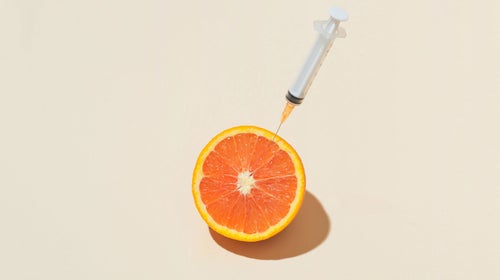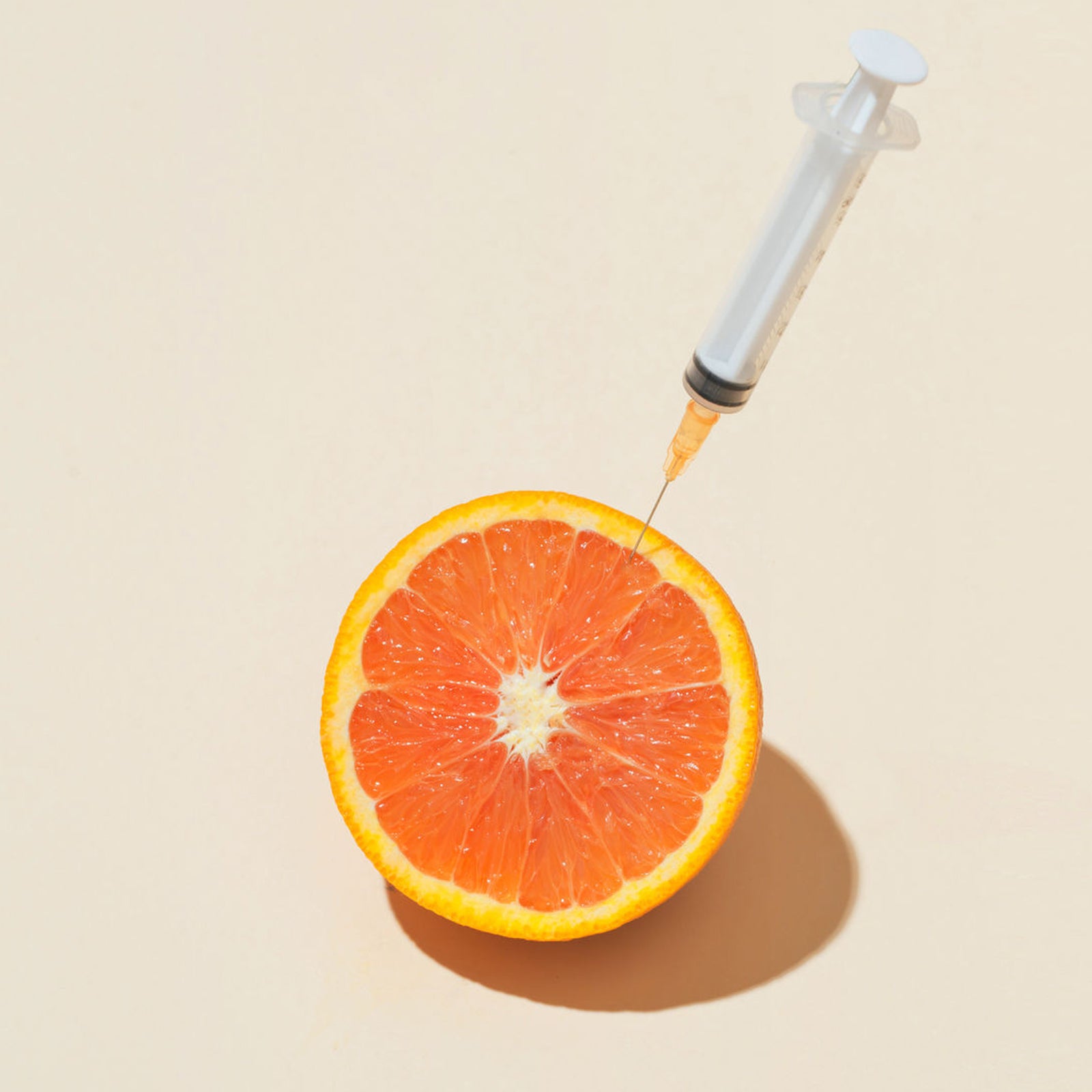Welcome to dinnertime in the year 2070. Your foodÔÇöperfectly tailored to your genomeÔÇöis prepared by a . Your kitchen is full of healthy fats and regionally sourced food, and you havenÔÇÖt counted calories in decades. You can credit your longer life span to the doctor-prescribed medication in your cabinet: produce. And the majority of your protein comes from╠řinsects.
How weÔÇÖll eat╠ř50 years from now is uncertain. But according to leading experts in food policy, agriculture, and nutrition, factors like climate change, individual and societal health trends, and technology will all╠řchange whatÔÇÖs on our plates. We asked╠řfive leaders in the food industry about what to expect╠řin the coming decades. From the unsurprising╠řto the╠ř┤│▒│┘▓§┤ă▓ď▓§-esque, here are some of their most compelling predictions.╠ř
Dinner Will Be Served Hot and Fresh Out of the Lab╠ř
Expert: Dr.╠řStuart Farrimond
Physician,╠řfood-science writer, and BBC radio host
According to ,╠řthe future of nutrition will have two separate camps: ÔÇťWeÔÇÖre going to have one group of people who want ÔÇśthe fix,ÔÇÖÔÇŁ he says. ÔÇťThey will╠řwant processed food that has all the answers.ÔÇŁ YouÔÇÖll find this group of people taking╠řDNA tests to get , popping╠ř marketed as ÔÇťadvanced supplements,ÔÇŁ biohacking, and eating food thatÔÇÖs designed for them based on their genetics.
ÔÇťAnd then youÔÇÖve got another group of people who shun all of that,ÔÇŁ Farrimond says. ÔÇťThey want natural, uncontaminated, organic, back-to-nature food.ÔÇŁ╠řThis group will be conscious of the environment, eating food technologically altered for their health and the planetÔÇÖs.╠řAccording to Farrimond, this population will abandon the carbon-intensive meat industry and opt for powdered blends of meatÔÇÖs high-protein, low-impact cheap alternative: insects. TheyÔÇÖll also cook with sugar enhanced ╠řto be sweeter (making it possible to use╠řless) and╠ř╠řingredients into intricate gastronomic masterpieces.
ÔÇťYouÔÇÖll have the most spectacular dinner parties,ÔÇŁ Farrimond says.
WeÔÇÖll Finally Embrace Fat
Expert: Elyse Kopecky
Nutrition coach and New York Times bestselling author
Many experts already think╠řitÔÇÖs time to , and is one of them. The author, who cowrote both ╠řcookbooks╠řwith four-time Olympian Shalane Flanagan, thinks that the future is simpler than wacky gene blends and technology. Instead, she believes that all athletes will embrace healthy fats╠řand╠řeliminate restrictive eating from╠řthe mix.
ÔÇťButter is a health food,ÔÇŁ says╠řKopecky.╠řÔÇťItÔÇÖs╠řmore nutrient dense than kale.ÔÇŁ She predicts that in a decade or two,╠řthe athleteÔÇÖs kitchen╠řwill be filled with calorically dense unrefined oils, butter, and other flavor-packed ingredients. ÔÇťWhen you cook with fat, it tastes better,ÔÇŁ she says.
As a young runner, Kopecky experienced╠řamenorrhea╠řand stress fractures, and looking back, she blames her diet.╠řÔÇťLow-fat everything and all frozen, prepackaged meals,ÔÇŁ she says. When she changed her eating habits╠řto include ample calories, particularly from fat, her symptoms disappeared. Kopecky hopes that athletes of the future wonÔÇÖt╠řhave to wait until their bodies break down to change their diets.
DonÔÇÖt Count on California
Expert: Tom Philpott
Food and agriculture correspondent for Mother Jones
California is ╠řstate in the country for agricultural production today, boasting a long list of exports including╠řalmonds, pistachios, strawberries, avocados, dairy, walnuts, and more. However,╠ř╠řsays that consumers of the future will have to count the state, and its crops,╠řout.╠řCalifornia, along with the rest of America, is projected to experience at the hands of climate change, including more wildfires like the one in╠řParadise,╠řsevere╠řdrought, and the looming possibility of an overdue╠ř. ThatÔÇÖs bad news for a host of reasons, but, according to Philpott, it will hit the food-supply chain especially hard.
ÔÇťWeÔÇÖre going to have to engage in what I call decalifornization,ÔÇŁ he says. (In other words, avocado toast will no longer╠řbe the brunch food of the moment.)╠ř
Sustainability Will Be Law
Expert: Tim Griffin
Director of the agriculture, food, and environment program at Tufts University╠ř
Griffin, an adviser to the most recent U.S. , thinks sustainability will color the future of food at every stage of╠řproduction, shopping, and preparation. Consumers of tomorrow will be hyperaware of how food gets to their plate, he says. ÔÇťTheyÔÇÖll need to ask not just, ÔÇśWhat am I going to eat for dinner?ÔÇÖ but ÔÇśWhat am I going to eat for dinner, and how will that impact X, Y, and Z?ÔÇÖÔÇŁ╠ř
Griffin says that everyday shoppers have the most sway in what happens to our food system,╠řand she believes that a greater awareness of how our eating habits impact the planet will, eventually, influence╠řpolicy.╠ř
ÔÇťTwenty-five to 40╠řpercent of food grown on [American] farms╠řis wasted,ÔÇŁ he says.╠řÔÇťBut╠řin the past,╠řthings have changed because of consumers. Social outcomes are important.ÔÇŁ People are taking waste more seriously, he says, and if that continues, sustainability will become part of our new guidelines. He points out that trend-based changes to the guidelines have happened before, but╠řslowly;╠ř for physical activity to be written in as an essential balance to our diets.
Your New Medicine Cabinet Is╠řthe Fridge
Expert: Monica Mills
Executive director of Food Policy Action
Americans today have more prescriptions than ever, but they the medication they need. Similarly, fresh fruits and veggies are necessary for your body to function properlyÔÇöthey╠řcan even your brain structureÔÇöbut for some people, the high cost of produce means . ÔÇťFood is medicine,ÔÇŁ says Mills, whose organization in Washington, D.C.,╠ř improved access to food, farmersÔÇÖ rights, and reducing the environmental impact of food production. Doctors and governments of the future, according to Mills, will understand╠řthat.
Farmers are currently federally incentivized to grow mass crops like corn and soy, but to fruit and vegetable growers. That makes corn-based foodÔÇösoda, fast-food burgers, nutrition barsÔÇöcheaper, says Mills, and it gives low-income individuals less access to healthy, fresh foods.╠ř
The future food market, according to Mills, will be saturated with programs like , which helps low-income people buy healthy, local food, and╠ř, which allows doctors to prescribe produce as medicine. Mills acknowledges that the governmentÔÇÖs stance on food production has historically been slow to change.╠řÔÇťBut 100 years from now,ÔÇŁ she says, ÔÇťI╠řhope it will look very, very different.ÔÇŁ


